#Jamaica Construction
Explore tagged Tumblr posts
Text
The Rise of Remote Work: Unveiling the Vital Role of Communication Skills for Project Practitioners
As the project management landscape continues to evolve, so do the essential skills required for success. At Jamaica Homes, we recently conducted a comprehensive salary survey that brought to light the significance of communication skills in the world of project management. With the global pandemic driving remote work into the mainstream, effective communication has emerged as a critical factor…

View On WordPress
#Building Projects#Collaboration#Communication Skills#Construction#Effective Communication#Home Building#Jamaica Construction#Jamaica Homes#Jamaica Property#Jamaica Real Estate#leadership#project management#project manager#Project Success#Remote Work#Stakeholder Management#success#team building#technology
1 note
·
View note
Text
Construction in The Baltic Triangle. Lomo LC-A+.
The Baltic Triangle and Jamaica Street area is one of my favourite places to spend time in the city. Since creative businesses moved in and some rather cool coffee shops and bars became established this former warehouse district has become the place to be.
However this state of affairs has had its drawbacks. Developers are now building blocks of small and overpriced apartments. Experience has told many people in this city that noise complaints follow as the people who move into them object to the noise and disruption that made the area "cool" in the first place.
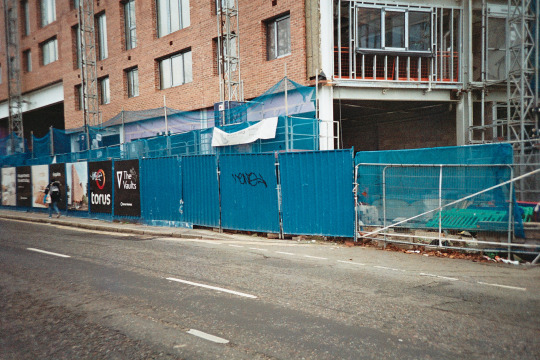


#liverpool#liverpoollomo#lomo#lomography#analogue photography#lomo lc a+#lomo kompakt automat#russian camera#expired film#35mm flim#35mm camera#35mm colour film#film photography#baltic triangle#south liverpool#jamaica street#construction#gentrification#film is not dead#don't think just shoot
3 notes
·
View notes
Text
General Construction Company in Jamaica NY

General Construction Company stands out as a symbol of dependability and excellence in a world where infrastructure and buildings are the foundations of growth. With years of construction experience, we have established a strong reputation for completing high-quality projects on time and under budget. General Construction Company in Jamaica, NY Every project we undertake is driven by our commitment to quality, safety, and sustainability. We guarantee that our clients receive not only structures but also homes, workplaces, and public spaces that improve their lives and communities.
General Construction Company provides a wide range of services that are suited to our clients' different demands. From residential and commercial construction to renovations and infrastructure development, our expert staff is capable of handling projects of any size and scope. Our architects and engineers work together to make your vision a reality, ensuring that every aspect matches your expectations and functional requirements.
Our company's concept is around high-quality workmanship. We recognize that every structure is an investment, and we endeavor to use the best methods and latest technologies to ensure long-term durability and aesthetic appeal. Our professional tradesmen are committed to maintaining the best standards in all aspects of building, from foundation work to final touches. By using high-quality materials and creative procedures, we ensure that our structures are not only long-lasting but also environmentally friendly.
Safety is the most important aspect of our activities. General Construction Company rigorously follows industry safety standards and regulations, providing rigorous training programs for our staff to reduce risks on-site. Best General Construction in Jamaica NY Our dedication to maintaining a safe working environment not only protects our staff but also ensures that our clients' projects are in capable hands.
Sustainability is another pillar of our practice. We are dedicated to lowering our environmental impact and supporting green building methods. From sourcing eco-friendly materials to integrating energy-efficient systems, we collaborate with our clients to design structures that are both sustainable and cost-effective in the long run.
At General Construction Company, customer happiness is our primary goal. We believe in open communication and collaboration, therefore we keep our clients informed and involved throughout the construction process. Best Construction Services in Jamaica NY Whether you want to build your dream home or expand your commercial space, we take pleasure in exceeding expectations and delivering great outcomes.
To summarize, General Construction Company is your go-to partner for all your construction needs. We are prepared to assist you in building a brighter future with our skilled staff, commitment to quality, emphasis on safety, and attention to sustainability. Contact us today to talk about your project and how we can help you realize your vision!
#General Construction Company in Jamaica NY#Best General Construction in Jamaica NY#Best Construction Services in Jamaica NY
0 notes
Text
Things Get Exciting On The Worksite In Laden's "Construction"
Everyday is a working day, but sometimes there needs to be a break. The 9 to 5 can bring on a different type of fatigue, so rest and relaxation in various forms are needed. For Dancehall Artist Laden, his work day suddenly turns into a party in the video for the single, “Construction“. Directed by Top Shootah, the worksite gets exciting for Laden in “Construction”. Construction work is one of the…

View On WordPress
#13thstreetpromo#13thstreetpromotions#blog#Construction#dancehall#dancehall music#jamaica#jamaican#Laden#music#music video#riddim#Slyda Di Wizard#Top Shootah#video#wordpress#youtube#Zho
1 note
·
View note
Text



Arthur Tress. Sand Covers Abandoned Car on Beach at Breezy Point South of Jamaica Bay 05/1973 / Old Refrigerators and Shell of Highrise at Breezy Point Highrise Construction Was Stopped by City in Major Battle to Preserve Area for Public Recreation 05/1973 / Auto Chassis Submerged in Jamaica Bay Waters near Breezy Point 05/1973
821 notes
·
View notes
Text
In the 1970s, Johnny Cash and June Carter Cash supported the construction of an SOS Children's Village in Montego Bay, Jamaica, near their holiday home. Johnny would bring his guitar and sing to the children who lived there, eventually dedicating the song "The Ballad of Annie Palmer" and its royalties to them.

153 notes
·
View notes
Text
Dress, circa 1883-1885, Scotland
Silk, cotton, linen, metal




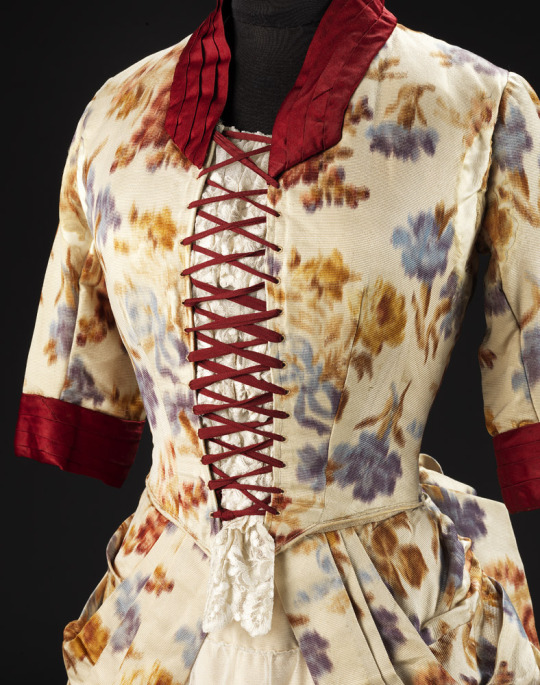

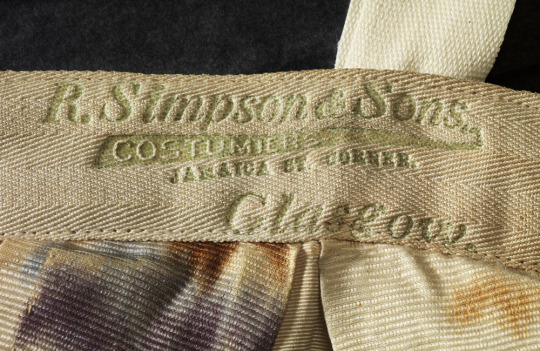
Description: Woman’s dress in cream corded silk chine printed with abstract floral design in red, blue, brown and yellow, with small, rectangular neckline with facing in pleated red silk satin, fitted bodice constructed in six panels, fastening centre front with red cord lacing through fourteen pairs of eyelets over a stomacher-style panel of horizontal cream machine lace frills. Elbow-length sleeves with pleated red silk satin cuffs. Skirt, full-length, fastening on left with five metal hooks and eyes, chine overskirt pleated into waistline at front and over hips at side, side panels trimmed with vertical border of cream machine lace and frill of cream machine lace extending into lower side edges of train, centre back cut-in-one with bodice with additional width in skirt to go over bustle, extending into a long train, red silk satin frill under hem. Petticoat-style underskirt revealed in front in cream silk satin underskirt decorated with six slightly asymmetrical horizontal rows of cream machine lace. Bodice lined in printed cotton, fitted with eight metal bones and waistband. Skirt front lined with linen and printed cotton, sides and back lined with printed cotton, integral thirteen-inch wire mesh bustle with two sets of twill weave tapes to pull fullness to back to create train, balayeuse around hem of skirt and train. Waistband printed in light green ‘R. Simpson and Sons Costumiers Jamaica St. Corner Glasgow’.
Worn by Ann Smith, the wife of Robert Kirk Simpson of R Simpson and Sons.
This romantic dress is printed with roses and has machine-lace frills on the skirt. In the 1870s and 1880s fashion looked back to the late 1700s, with its flamboyant fabrics, for inspiration. The blurred effect on this evening dress is created by printing the warp prints before the fabric is woven. This ikat technique originated in Asia and was introduced to France in the mid-1700s, where it was known as chiné. Here, it’s use, together with the laced bodice and open over-skirt draped back over the hips and into the bustle, reflect the historical revival style with its imitation of an eighteenth-century open gown.
Glasgow Museums Collection Online
152 notes
·
View notes
Text
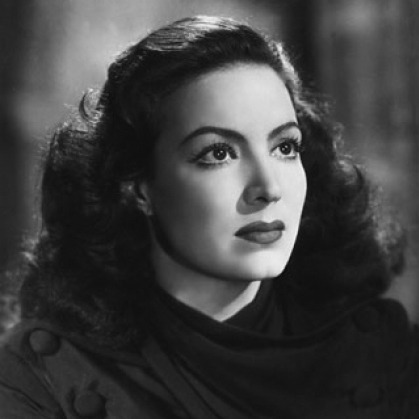

Propaganda
María Félix (Doña Barbara, La Mujer sin Alma, Rio Escondido, La Cucaracha)—Maria Felix is still possibly the most well-known Mexican film actress. She turned down multiple-roles in Hollywood and a contract with Metro-Goldwyn-Meyer in order to take roles in Mexico, France, and Argentine throughout the 1940s, 50s, 60s. She was so famous and so respected as a dramatic actress that she inspired painters, novelists and poets in their own art--she was painted by Diego Rivera, Jose Orozco, Bridget Tichenor. The novelist Carlos Fuentes used her as inspiration for his protagonist in Zona Sagrada. She inspired an entire collection by Hermes. In the late 1960s Cartier made her a custom collection of reptile themed jewels. She considered herself to be powerful challenger of morality and femininity in Mexico & worldwide--she routinely played powerful women in roles with challenging moral choices and free sexuality. But even still, years after he death, she is celebrated with Google Doodles, and appearances in the movie Coco, and holidays for the anniversary of her death.
Maureen O’Hara (The Parent Trap, The Quiet Man)—They called her the Queen of Technicolor. That right there should help introduce people to the fiery, wonderful, stunning Maureen O’Hara. She was from Ireland, born in 1920, and started in theater at the age of ten. At 15, she was winning drama awards, including one for her performance as Portia in the Merchant of Venice. At 16, she was the youngest pupil to graduate from the Guildhall School of Music. By 18, she transitioned to film, starting off with a bang alongside Charles Laughton in Hitchcock’s Jamaica Inn, and proceeded to work steadily up through the early 1970s. She was in adventures and comedies and romances, spent a lot of time in westerns giving merry hell to John Wayne (and less merry hell to the indomitable John Ford — she held her own even when he was verbally abusive and demeaning to her). She was in The Quiet Man, which was the first American-made film entirely filmed in a foreign country. She helped make American Christmas what it is with Miracle on 34th Street. She played a lineup of headstrong, forthright women second only, perhaps, to Katharine Hepburn. She was married three times, lived for a while with a boyfriend in Mexico, sued for custody of her daughter in the 1950s, AND sued a magazine for libel in the same era. After mostly retiring from acting, she edited a magazine. She eventually sold the magazine to spend more time with her grandson, but even then ran a ladies fashion store. She was an outspoken, brilliant, passionate lady, with amazing red hair, a career to envy, and — well — that face!
This is round 2 of the tournament. All other polls in this bracket can be found here. Please reblog with further support of your beloved hot sexy vintage woman.
[additional propaganda submitted under the cut]
María Félix:

She's Thee Hot Vintage Movie Woman of México. She's absolutely gorgeous and always looks like she's about to step on you. you WILL be thankful if she does.
"María Félix is a woman -- such a woman -- with the audacity to defy the ideas machos have constructed of what a woman should be. She's free like the wind, she disperses the clouds, or illuminates them with the lightning flash of her gaze." - Octavio Paz
María Félix is one of the most iconic actresses of the Golden Era of Mexican Cinema. La Doña, as she was lovingly nicknamed, only had one son, and when her first marriage ended in divorce her ex-husband stole her only child, so she vowed that one day she’d be more influential than her ex and she’d get her son back. AND SHE DID! María Félix rejected a Hollywood acting role to start her acting career in Mexico on her own terms with El Peñón de las Ánimas (The Rock of Souls) starring alongside actor, and future third husband, Jorge Negrete. She quickly rose to incredible heights both in Mexico and abroad, later on rejecting a Hollywood starring role (Duel in the Sun) as she was already committed to the movie Enamorada at the planned filming time. Of this snubbing she said, quote: “I will never regret saying no to Hollywood, because my career in Europe was focused in [high] quality cinema. [My] india* roles are made in my country, and [my] queen roles are abroad.” (Translator notes: here the “india” role means interpreting a lower-class Mexican woman, usually thought of indigenous/native/mixed descent —which she had interpreted and reinvented throughout her acting career in Mexico— and what abroad was typically considered the Mexican woman stereotype, with the braids, long simple skirts, and sandals. This also references the expectation of her possibly helping Hollywood in perpetuating this stereotype for American audiences that lack the cultural and historical contexts of this type of role which would undermine her own efforts against this type of Mexican stereotypes while working in Europe) She was considered one of the most beautiful women in the world of her time by international magazines like Life, París Match, and Esquire, and was a muse to a vast number of songwriters (including her second husband Agustin Lara,), artists, designers, and writers. Muralist Diego Rivera described her as “a monstrously perfect being. She’s an exemplary being that drives all other human beings to put as much effort as possible to be like her”. Playwriter Jean Cocteau, who worked with her in the Spanish film La Corona Negra (The Black Crown) said the following about her, “María, that woman is so beautiful it hurts”. Haute Couture houses like Dior, Givenchy, Yves Saint Laurent, Balenciaga, Hérmes, among others, designed and dressed her throughout her life. She died on her birthday, April 8, 2002, at 88 years old, in Mexico City. She was celebrated by a parade from her home to the Fine Arts Palace in the the city’s Historic Downtown, where a multitude of people paid tribute to her. Her filmography includes 47 movies from 1942 until 1970, and only two television acting roles in 1970. She has 2 music albums, one recorded with her second husband, Agustín Lara, in 1964 titled La Voz de María y la inspiración de Agustín «The voice of María and the inspiration of Augustín», and her solo album Enamorada «In Love» in 1998. Her bespoke Cartier jewelry is exhibited alongside Elizabeth Taylor’s, Grace Kelly’s and Gloria Swanson’s. In 2018, Film Director Martin Scorsese presented a restored and remastered version of her film Enamorada in the Cannes Classics section of the Cannes Festival and Google dedicated a doodle for her 104th birthday. On august 2023 Barbie added her doll to the Tribute Collection.

Maureen O'Hara:

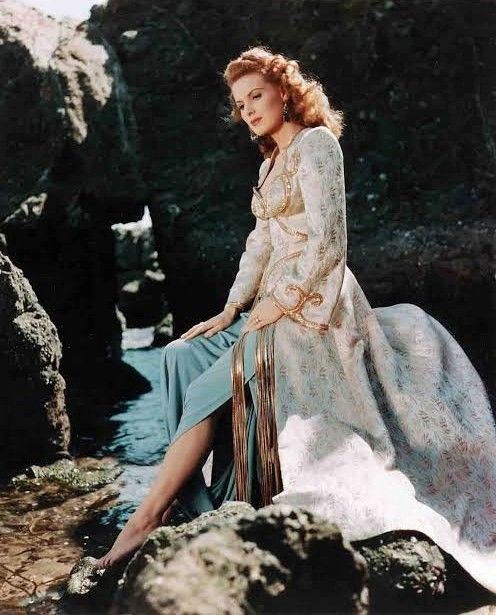
I thought she was one of the most beautiful women in the world when I was a kid and I have yet to really change my mind. Always loved her temper and her red hair. Plus she was kind of a MILF in The Parent Trap

Haughty, red hair, hot.
I would have to give up my passport if I didn't submit Maureen O'Hara but also have you seen her? Not only did she look like that (she was called the Queen of Technicolor, though she wasn't a big fan of that sobriquet), she was also very funny and tough as nails. She faced off against Walt Disney in a contract dispute and the legend goes that when someone mentioned her at his deathbed, he sat up and said 'That bitch!'. Her comment on that story is "At least he didn't think of me and say, 'That wimp'." She struggled to get serious roles for a time, saying ""Hollywood would never allow my talent to triumph over my face," so she plays the sexy princess/pirate/harem girl in a LOT of early movies that she referred to as "Tits and Sand" films, she being the tits in question. She also turned down so many leading men and studio bosses (Errol Flynn and Howard Hughes are among her rejects) that there were rumours spread that she was a lesbian. Many egos were battered it seems. I'm including the infamous Lady Godiva scene in the photo propaganda for the sheer Moment of it [link] . It was a bit of a flop critically, but it was one of Clint Eastwood's first film appearances and she said he told her later that he was very glad of the money at the time.
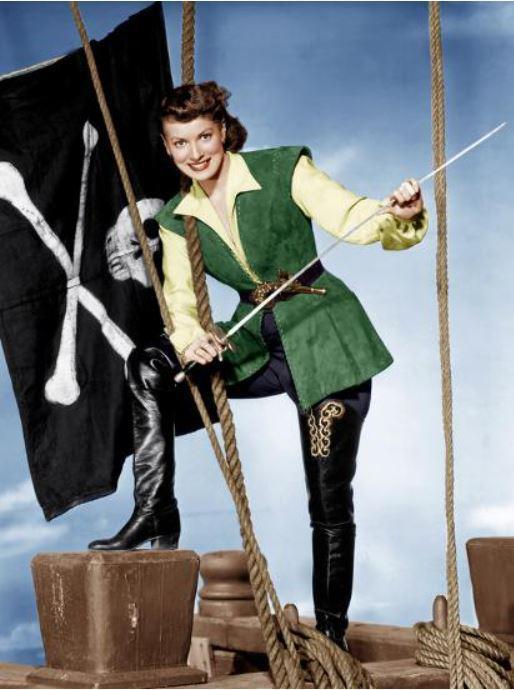

She was a very proud Irish woman and when she went for her American citizenship they insisted on referring to her as British (the timeline of Irish independence is a bit wibbly wobbly, we won't get into it here). She refused to accept American citizenship under that condition and argued her way through every level of US immigration she could find, supposedly saying "I'm not responsible for your antiquated records here in Washington", until a judge finally gave up and said "Give her what she wants, just get her out of here". This made her the first ever person seeking US citizenship to be proclaimed Irish on the record!
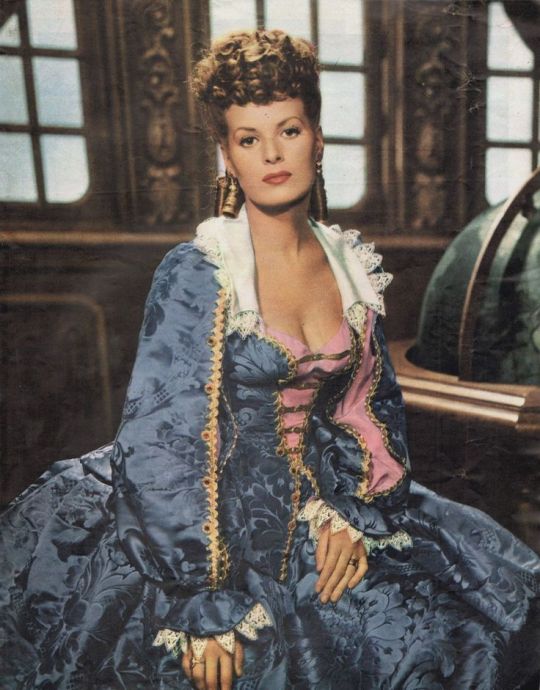
The hair. The accent. The figure. The acting chops. The perfection.

174 notes
·
View notes
Text
I think one thing that would be nice to see explored a bit more in Solarpunk art/aesthetic posts is how Solarpunk will likely look different depending on where you are, what’s feasible in that area, weather patterns, etc.
Like its almost 5am so I’m gonna be rambly but like. A lot of the most common features of Solarpunk art so far are a bit of an art-noveau type look, with lots of stained glass. Heavy emphasis on solar power and windpower and trees. In no way, shape, or form am I going to pretend this is BAD! I love this look, I think its great and inspiring and I love the color green I just.
Maybe Solarpunk doesn’t mean ‘green’ for everyone everywhere. Solarpunk might be more… yellows, and reds, and oranges. If you live in a desert, where there aren’t a lot of trees. I’m thinking places like Arizona, New Mexico, Niger, Chad, Libya. What would solarpunk fashion look like in these places—I feel like embroidered jean overalls won’t be common here. Traditional wear from these places is GORGEOUS, and I’d love to see more of a highlight on it and these biomes in Solarpunk. What would the housing look like—how would you keep cool indoors and out? I’ve seen a few ideas put into practice, but what would you dream up? How would you make them fun?
Similarly, how about coastal communities? Sure there’d be lots of green—but green may stand for seaweed just as much as it would trees. Not to mention the vibrant blues of the sky and seas, and the rainbow of colors from coral and seashells and glittering scales. What would a solarpunk community look like along the coasts of places like Florida, Hawaii, Jamaica, etc.? How are some of these places already Solarpunk? Wind and solar power could be an option, but we can also use hydropower as well—what would a solarpunk hydropower system look like in your wildest dreams? Fish-shaped spinning turbines underwater, swimming like sharks? Would houses float and bob along the water? How would gardening be handled with mostly salt water around—rain water capture would be critical, I feel—or desalination of small amounts of salt water. What would the fashion look like HERE? What does it look like already?
What does solarpunk look like in snowy places—like Alaska, Canada, Greenland, Russia? When green comes around in spring and summer, but fall and winter brings expanses of snow and ice? Solarpunk fashion here would be a LOT cozier than the solarpunk fashion on a Florida beach. I’m imagining lots of furs and layers. How would traditional practices be used to stay safe and warm, how would energy be captured and stored during long and dark winters? Would communities here be more nomadic, traveling further south during the coldest months, or would they stay where they are and construct homes that easily stay warm with little output?
Its actively 5am now so if I don’t make sense by all means. I guess I don’t make sense. But this has been on my mind for a few days now and I guess as we get closer to Solarpunk Aesthetic Week, this can be a fun and interesting thing to keep in mind! Let this inspire your art, your music, your fashion, your stories, your musing, and how you reach out to others about the ideals of Solarpunk.
#out of queue#solarpunk#solarpunk aesthetic week#solarpunk fashion#solarpunk world#solarpunk aesthetic#ani rambles#mmmm idk if I’ll DELETE this later but I might edit for clarity when its not 5 the fuck am
1K notes
·
View notes
Text
all the time, gotta walk away, for a moment, take a break, infuriated, when reading about European implementation of forced labour, particularly and especially thinking about nineteenth and early twentieth centuries plantations, whether it's sugarcane or rubber or tea or banana, whether it's British plantations in Assam or Malaya; Belgian plantations in Congo; French plantations in West Africa; Dutch plantations in Java; de facto United States-controlled plantations in Haiti or Guatemala or Cuba or Colombia. and the story is always: "and then the government tried to find a way to reimpose slavery under a different name. and then the government destroyed vast regions of forest for monoculture plantations. and then the government forced thousands to become homeless and then criminalized poverty to force people into plantation work or prison labor." like the plantation industries are central (entangled with every commodity and every infrastructure project) and their directors are influencing each other despite spatial distance between London and the Caribbean and the Philippines.
and so the same few dozen administrators and companies and institutions keep making appearances everywhere, like they have outsized influence in history. like they are important nodes in a network. and they all cite each other, and write letters to each other, and send plant collection gifts to each other, and attend each other's lectures, and inspire other companies and colonial powers to adapt their policies/techniques.
but. important that we ought not characterize some systems and forces (surveillance apparatuses, industrial might, capitalism itself) as willful or always conscious. this is a critical addendum. a lot of those forces are self-perpetuating, or at least not, like, a sentient monster. we ought to avoid imagining a hypothetical boardroom full of be-suited businessmen smoking cigars and plotting schemes. this runs the risk of misunderstanding the forces that kill us, runs the risk of attributing qualities to those forces that they don't actually possess. but sometimes, in some cases, there really are, like, a few particular assholes with a disproportionate amount of influence making problems for everyone else.
not to over-simplify, but sometimes it's like the same prominent people, and a few key well-placed connections and enablers in research institutions or infrastructure companies. they're prison wardens and lietuenant governors and medical doctors and engineers and military commanders and botanists and bankers, and they all co-ordinate these multi-faceted plans to dispossess the locals, build the roads, occupy the local government, co-erce the labour, tend the plants, ship the products.
so you'll be reading the story of like a decade in British Singapore and you're like "oh, i bet that one ambitious British surgeon who is into 'economics' and is obsessed with tigers and has the big nutmeg garden in his backyard is gonna show up again" and sure enough he does. but also sometimes you're reading about another situation halfway across the planet and then they surprise you (because so many of them are wealthy and influential and friends with each other) and it'll be like "oh you're reading about a British officer displacing local people to construct a new building in Nigeria? surprise cameo! he just got a letter from the dude at the university back in London or the agriculturalist in Jamaica or the urban planner from Bombay, they all went to school together and they're also all investors in the same rubber plantation in Malaya". so you'll see repeated references to the same names like "the British governor of Bengal" or "[a financial institution or bank from Paris or New York City]" or "[a specific colonial doctor/laboratory that does unethical experiments or eugenics stuff]" or "lead tropical agriculture adviser to [major corporation]" or "the United Fruit Company" and it's like "not you again"

#tidalectics#my writing i guess#archipelagic thinking#multispecies#plantations and plantationocene#ecologies
324 notes
·
View notes
Text
The Link Between Ghana, Africa, and Jamaica: A Shared History, Culture, and Architectural Evolution
#africa#Akan#architecture in Jamaica#Ashanti#Caribbean architecture trends#enslaved Africans#ghana#green construction Jamaica#industrial real estate Jamaica#Jamaica#Jamaican Creole#Jamaican property development#Jamaican real estate#Patois#real estate market jamaica#sugarcane#sustainable building Jamaica
0 notes
Note
Hello, have you seen this ?
https://www.reddit.com/r/SaintMeghanMarkle/s/JeFLWTbOqt
Do you think it could be a confirmation of the tea you received recently ?
No. Without photos or video, this “Marcus” they’re talking about is Markus Anderson of SoHo House, with whom Meghan’s been friends for years. He and Meghan used to travel together quite a bit before Harry came along.
By the way, y’all. I just looked up Soho House and guess where they’ve got a beach club resort: in Canouan, an island in St. Vincent and the Grenadines. It opened in March 2022, and in October 2023, not only were Harry and Meghan were papped in Canouan, it’s been reported they stayed at the Soho House Beach Club. Since there were no other sightings of them, it’s pretty plausible that they used Soho House.
You guys remember that trip Harry made to Austin, TX for F1? Did you know that there’s a Soho House in Austin TX too?
And remember when Sussex PR was manifesting a tour/visit to Australia last year? It started way back in February 2023. Yep, you guessed it. Soho House Sydney, coming soon. It was announced in October 2023 with a massive PR push that included a SXSW booth and a magazine feature/photo spread of Markus Anderson. Coincidence? Maybe.
So if the Marcus that this video claims was there is really Markus Andersen, then it could very well be possible that Soho House may be looking at Jamaica for a new property. That’s something I can see the PM getting on board with if it means more wealthy white people coming, and that’s something I can see Meghan and Harry schmoozing with him for, especially if it would help ease the way with construction and permits (which has delayed Sydney Soho House).
I’m definitely keeping my eye on Soho House now. Too many coincidences. Especially when you also consider Meghan did a pap walk with Markus on Coronation Weekend…
90 notes
·
View notes
Text
Best General Construction Company Services in Jamaica NY

BobKing Construction Inc. is the best general construction company in Jamaica. We provide the best construction services for homes and businesses in Jamaica, NY.
0 notes
Text
The Veiled Garvey: The Life and Times of Amy Jacques Garvey

The Veiled Garvey: The Life and Times of Amy Jacques Garvey
In this biography, Ula Taylor explores the life and ideas of one of the most important, if largely unsung, Pan-African freedom fighters of the twentieth century: Amy Jacques Garvey (1895-1973). Born in Jamaica, Amy Jacques moved in 1917 to Harlem, where she became involved in the Universal Negro Improvement Association (UNIA), the largest Pan-African organization of its time.
She served as the private secretary of UNIA leader Marcus Garvey; in 1922, they married. Soon after, she began to give speeches and to publish editorials urging black women to participate in the Pan-African movement and addressing issues that affected people of African descent across the globe.
After her husband's death in 1940, Jacques Garvey emerged as a gifted organizer for the Pan-African cause. Although she faced considerable male chauvinism, she persisted in creating a distinctive feminist voice within the movement.
In her final decades, Jacques Garvey constructed a thriving network of Pan-African contacts, including Nnamdi Azikiwe, Kwame Nkrumah, George Padmore, and W. E. B. Du Bois. Taylor examines the many roles Jacques Garvey played throughout her life, as feminist, black nationalist, journalist, daughter, mother, and wife. Tracing her political and intellectual evolution, the book illuminates the leadership and enduring influence of this remarkable activist.
#The Veiled Garvey: The Life and Times of Amy Jacques Garvey#Amy Jacques Garvey#Marcus Garvey#UNIA#Black Nationalism#jamaica#Black Nationalists#Pan African#Pan Africanism#The Black Truebrary#BLACK TRUEBRARY#FREE BLACK BOOKS#BLACK HISTORY MATTERS
27 notes
·
View notes
Text
Hobie Brown & Anarchism: A Discussion Pt 2 (Race)

Authors Note: This is my dissertation for the discourse about Hobie’s politics being misrepresented as your friendly community radical leftist
Warnings: Political Ideologies, mentions of violence and oppression
Hobie’s politics are intertwined deeply with his race, as previously stated in my random headcanons post I talked about Hobie being a Jamaican Brit, he has a lot of great analysis on colonization and imperialism, living in a colonized state of New London
(Again I’ve headcanoned Hobie to live in Lenapehoking **New York/Brooklyn and the surrounding areas** that was recolonized by the British Government and renamed New London, I’ll say he was raised in Camden but he relocated to New London when his family decided to leave due to many poor people being displaced to the new settlement. He still exists in the 70s for the most part but sometimes I do set it in modern times, there are some books ill add that are after Hobie’s time period)
Hobie is in touch with his Caribbean roots, a roadman, but an islander at heart, his grandparents raised him very similarly to their own upbringing in Jamaica, he’s well versed in the liberative politics of the Caribbean, keeping track of coupes, falsely installed leaders, environmental activism, labor strikes and organizations, and queer liberation movements, he knows he’s unable to support their struggle physically but as Spiderman he’s vocal about the efforts of those overseas fighting against settler colonialism.
There are often times where there a diaspora groups who have movements in the colonial lands for their homelands, and those are instances where he can be present to fight, and protect.
Hobie is a dark skinned black man, he’s spent his life navigating colorism and antiblackness, whether you headcanon him as other, he still has existed in spaces where black men and women trans and cis have faced antiblackness, misogynoir and trans-misognynoir, from his family, himself and his community.
For many years he spent time witnessing these acts from people around him (Like how many of us know what family members to trust with our identities and politics because of how lax and unaware the adults we were raised with speak), I don’t see him as the person to spew hate, but he has had to unlearn constructs around colorism and his social political understanding of the world, first through lived experience, then through learned information, and then through community action—praxis.
I’d personally headcanon him as possibly genderqueer and asexual (like myself) due to how often he’s the receiving end of unwanted sexual attention, he enjoys sex, but sees it as an intimate act with people he needs to trust. Saying this he still had to navigate being queer in homophobic and transphobic in black spaces, (This is for all my black trans friends, white trans people please don’t use this as a reason to be anti-Black, this is a intracommunity conversation.)
He was lucky to have an expanse of siblings with varying gender expressions and sexuality so his home was a safe space, but he still wasn’t immune to facing this violence.
He goes hard for dark skinned black people, and black people who aren’t conventionally attractive, he knows he has privilege with his looks and how that bends people in his favor, but regardless of that Hobie wants people to KNOW him on a deep level, and isn’t shy about deep emotional connections and emotional maturity, he knows people intimately, in ways where people expose their inner most turmoil to him and he accepts them as they are, and asks before offering advice.
Considering his feelings on treating people with respect regardless of appearance this is best shown with the way he interacts with houseless people on the street, he doesn’t shirk away from the smell or their appearance, he is knowing and emphatic to the circumstances they’ve been forced into, he isn’t deterred by their delusions, hallucinations of breakdowns, and he is an expert at deescalate them when they’re having a mental health crisis. He doesn’t openly antagonize people (for the most part) but he kinda has this aquarian way of showing his authority through his intellectual capacity and cool demeanor, he does speak down to people who are treating people in a discriminating fashion, he’s very shady.
Like lets say he’s in a group of people and their spewing colorist remarks he’ll dramatically sigh and rub his temples and say shit like,
“Ya don’t really read do you?”
“C’me off it mate”
“Someone’s new ‘ere”
And if the person or conversation continues in that direction, he’ll openly state his opinions instead of making the tension palpable with his shade.
“Y’know ‘s quite simple innit? Dark skinned black people are the lowest on colonial racial pillers, dark skinned women navigate it the hardest, having to live in the confines of racialized ideas of beauty and attraction.”
If the person is open to learning he’ll continue to teach them in a nuanced fashion, taking his time to explain and highlight the histories and how they connect with modern social standards, but if they aren’t he just continues to be annoyed and exasperated, usually before that happens his group ushers them away, their space isn’t for people who want to debate the livelihood of other people.
As a taste of the romance and platonic parts,
Hobie finds all people attractive, he sees past their physical traits, and focuses on the content of their character, their morals, their personal goals and aspirations, that is where he finds beauty in people, sexually or romantically? As I stated before he has to know you before initiating a relationship like that, but he does recognize that there are beautiful people, he prefers to get into relationships with black people or non-black people of color only if they are willing to navigate antiblackness alongside him and for the safety of other black people, and don’t expect him to stay in a relationship with someone who’s family is racists or discriminatory especially if you don’t verbally set boundaries and hold the defensive.
He does have non conventional ideas of romance, but he gives and shows love in all kinds of way that it makes it worth feeling insecure in the basis of the relationship, I don’t believe that his consistency joke was meant to be understood as jumping between person to person, or manipulating you into a relationship with no future goal in mind, he doesn’t mind spending the rest of his life alone, especially taking into consideration his role as Spiderman, but he wants to have someone who will anchor him in the chaotic inconsistent world, that the roles they play in love are adaptable, a giver, a provider, a support system, a friend, a comrade he plays all those roles effortlessly and knows which you need and when. He isn’t devastated by moving on from someone he loves, he recognizes that people are in your life for a reason for a certain period of time, short term and long term, and he doesn’t fight the change when the tides of life are moving against him.
I got all yalls request imma reply so you know I see them, will work on them in the next few weeks since application deadlines are coming up <33
#hobie brown x reader#hobie headcanons#hobie brown#hobie brown x black!reader#across the spiderverse#miguel o’hara x reader#atsv#armands sanctum
114 notes
·
View notes
Text
General headcanons — Kyle "Gaz" Garrick
Pairing: None
Summary: Some general headcanons I have about Gaz
Warnings: Mentions of Death, PTSD, pregnancy, and mental illness
notes: This is somewhat of a sequel to this post I made last year, except solely about Gaz. Soon I hope to post some romantic headcanons for the guys :)


Grew up in London
Has four older sisters and was raised by a single mother
His dad passed away when he was young and he never really got to know his dad's side of the family
Spent most of the week at his grandparent's house because his mom worked a lot
His sisters used to dress him up in dresses, do his makeup, etc and
Is very secure in his masculinity + feminine expression as a result
Prefers rugby to soccer
Worked odd construction jobs from the age of 13 until he enlisted
His dad was Jamaican and his mom is white British
Has a Pinterest where he saves nothing but outfit ideas and recipes for snacks to share with the 141
Is the deepest sleeper ever
Loves caramel and chocolate together
His favorite sweet is an Aero peppermint chocolate bar
Is a great dancer + often goes to dance studios
Also wishes he had the time to join an actual dance crew
His civilian clothes are 98% Nike tech
Even though he isn’t close with his dad’s side of the family, he wants to go to Jamaica and see where his family is from
Had a pregnancy scare with his gf when he was 18
The experience made him realize that while he definitely wants kids, he only wants them if he was out of the military and could be there for them every day.
Is annoyingly good at battle royale and shooter type games, despite the fact that he far prefers cozier games like Breathe of the Wild or Pokemon
Very nearly became a medic
Is a fantastic gift giver
Prefers to sleep on the couch instead of in bed
Always says goodbye with a hug
Collects figurines, lego sets, and hot wheels.
The duvet on his bed is navy blue/grey with white plaid stripes
Will always Facetime instead of sending texts or calling
Has been seeing a therapist/counselor since he was 4 for anxiety disorder and some BPD symptoms.
Two weeks after the attack at Piccadilly Circus in MW1, he ended up in the hospital after having a severe panic attack that left him almost completely dissociated.
A year afterward, he was diagnosed +with C-PTSD
His favorite season is autumn
Has a fear of dogs, but absolutely melts when they lick his hand/face
His dream was to be an MMA fighter, and he still trains frequently
wants to grow his hair out but can’t because of Army regs + doesn’t have the time to take care of it properly
His favorite movie is Avatar
Is involved in the online cosplay community/forums and has spent a few thousand pounds creating the most accurate Miles Morales cosplay
#kyle gaz garrick#gaz#gaz mw2#gaz headcanons#gaz garrick#gaz x reader#cod mw x reader#cod mw2#mw2 x you#mw2 x reader#call of duty x reader#cod#cod x gn!reader#cod x oc#cod x y/n#cod x you#cod x reader#tf 141#los vaqueros#call of duty
155 notes
·
View notes